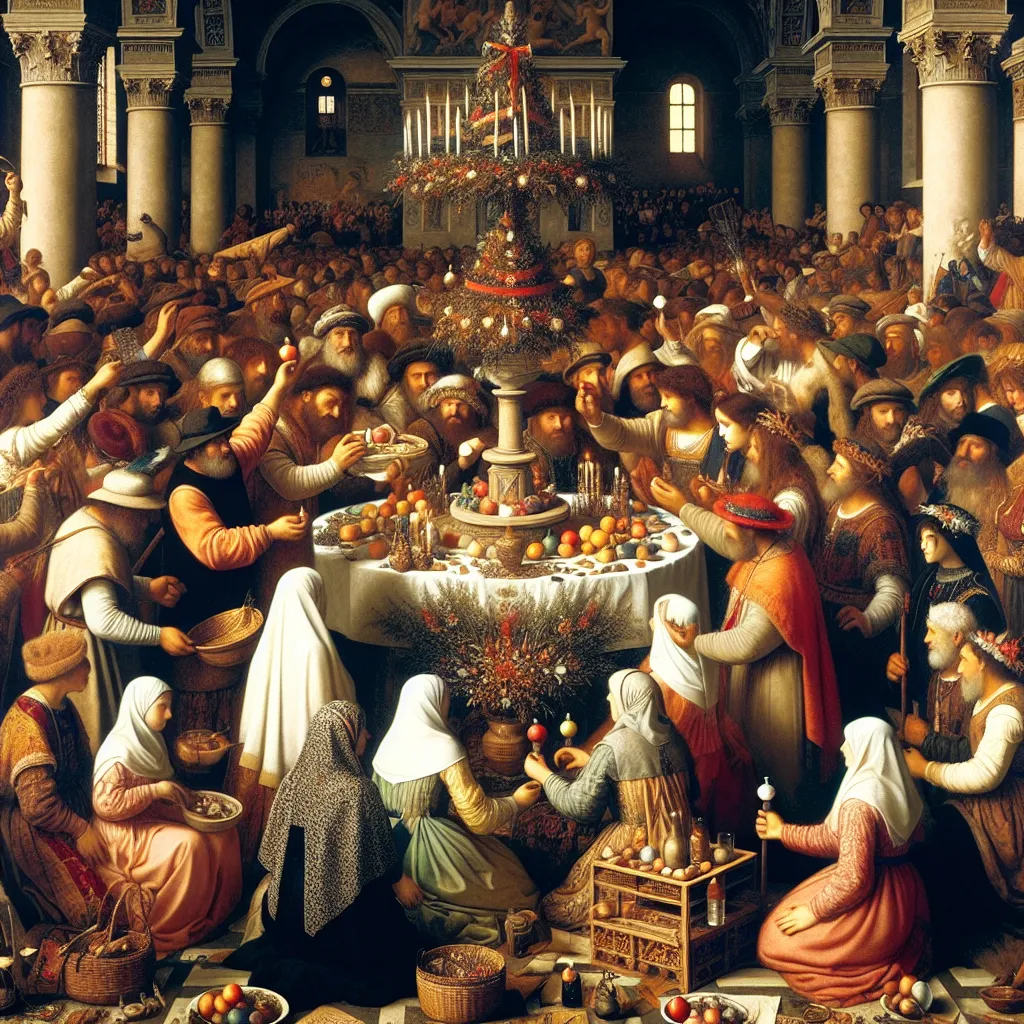
- Published on
- Authors

- Name
- You
Blot and Sumbel: Rituals of Offering and Celebration
The Norse traditions are teeming with rituals that intricately weave the physical and metaphysical realms. Among the most profound of these rituals are Blot and Sumbel—practices that encapsulate both the essence of offering and the joy of communal celebration. While rooted deep in historic and cultural contexts, these rituals remain a mesmerizing testament to the Norse people's reverence for the sacred and the communal.
The Blot: A Sacrificial Ceremony
Blot, pronounced 'bloat,' is derived from the Old Norse word blótan, meaning to worship with sacrifice. Blot ceremonies were conducted to honor the gods, spirits, and ancestors, seeking blessings and protection.
| Aspect | Description |
|---|---|
| Deities Invoked | Primarily Aesir and Vanir gods such as Odin, Thor, and Freyr. |
| Offerings | Typical offerings included livestock, mead, food items, and sometimes crops. |
| Purpose | To seek favor, protection, and ensure fertility and prosperity. |
| Location | Sacred groves, open fields, or especially constructed altars. |
Significance and Process
The Blot held profound significance as it was believed that through the act of sacrifice, a reciprocal relationship with the divine was maintained. Offerings were selected with great care, symbolic of the petitioner's devotion and sincerity.
- Preparation: Ritual purity was crucial. Participants often cleansed themselves, adorned ritual attire, and prepared offerings.
- Sacrifice: The chosen sacrifice—be it an animal or food—was presented on the altar. The blood (if an animal) was collected and used to anoint the altar, participants, and surrounding spaces, believed to imbue all with divine favor.
- Invocation: Prayers and invocations were chanted, calling upon the deities to accept the offering and bestow blessings.
- Feast: Finally, the community would partake in a feast, consuming the non-sacrificial parts of offerings in communal unity.
The Sumbel: Ritual of Toasting and Celebration
Sumbel: A key social and spiritual ceremony in Norse culture, involving the ritual of toasting, oath-making, and storytelling. It remains a vibrant example of the community's value in oral traditions and shared experiences.
| Aspect | Description |
|---|---|
| Deities Invoked | Wide range, often including ancestral spirits. |
| Offerings | Primarily mead, beer, or other ceremonial drinks. |
| Purpose | To honor gods and ancestors, forge bonds, and make oaths. |
| Location | Usually indoors, within longhouses or communal halls. |
Conduction of Sumbel
Unlike the sacrificial solemnity of Blot, a Sumbel was jubilant, focused on fellowship, remembrance, and the spoken word's power.
- Gathering: Participants assembled in a circular formation signifying equality and unity.
- Leading Toast: Usually initiated by a chieftain or a chosen gothi (priest), the honoring began with a toast to the gods.
- Rounds of Sumbel: Typically consisting of three rounds:
- First Round: Dedicated to the gods and goddesses.
- Second Round: For the ancestors and fallen heroes.
- Third Round: For personal boasts, oaths, and declarations.
- Drinking Horn or Cup: Passed around where each participant drank, made a toast, boast, or oath, and recounted stories.
- Theming and Reverence: Stories and toasts were often themed around valor, honor, and community bonds.
Bridging Advanced Science and Mystical Wisdom
The fascinating interplay between Blot and Sumbel rituals reflects an understanding recognized by both advanced science and mystical traditions:
- Psychological Significance: Modern psychology appreciates the value of ritual in communal unity and individual identity.
- Quantum Mysticism: The idea of interconnectedness and energy exchange in rituals aligns intriguingly with quantum theories of entanglement.
- Cultural Anthropology: These rituals provide insights into social structures, belief systems, and the timeless human need for connection.
Conclusion
Blot and Sumbel, ancient rituals of the Norse culture, offer profound insights into a world harmoniously balancing the sacred and the communal. Their intricate practices underscore an enduring legacy—a legacy that bridges the scientific and the mystical, inviting us to explore the depths of human spirituality and cultural richness.
In the modern context, these rituals remind us of the power inherent in unity, tradition, and the shared journey of life. Through the lens of Blot and Sumbel, we glimpse the timeless dance of offering, celebration, and the relentless pursuit of connection with the divine.
